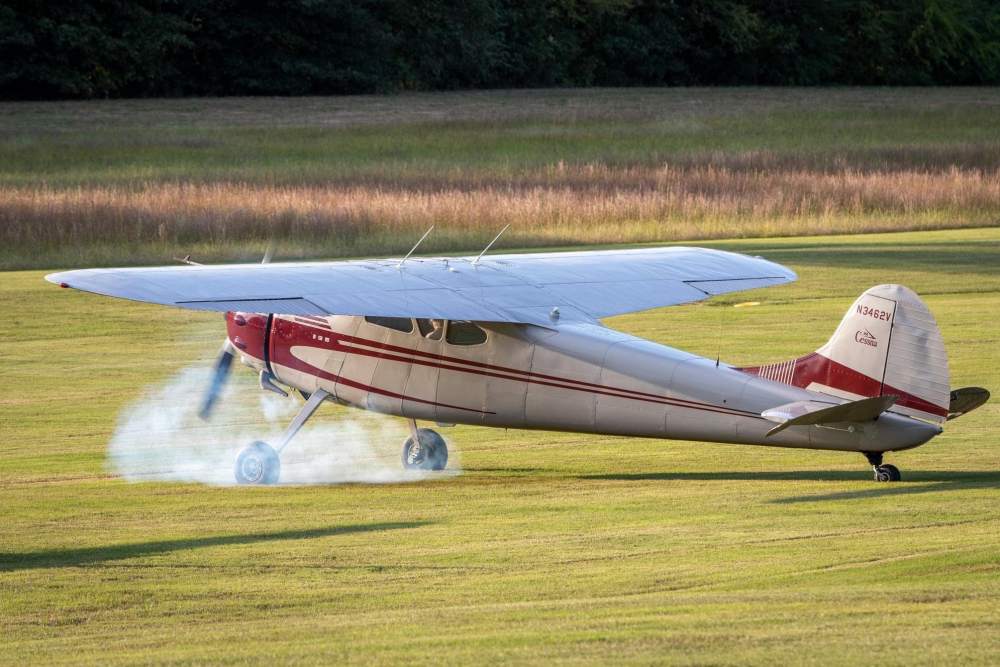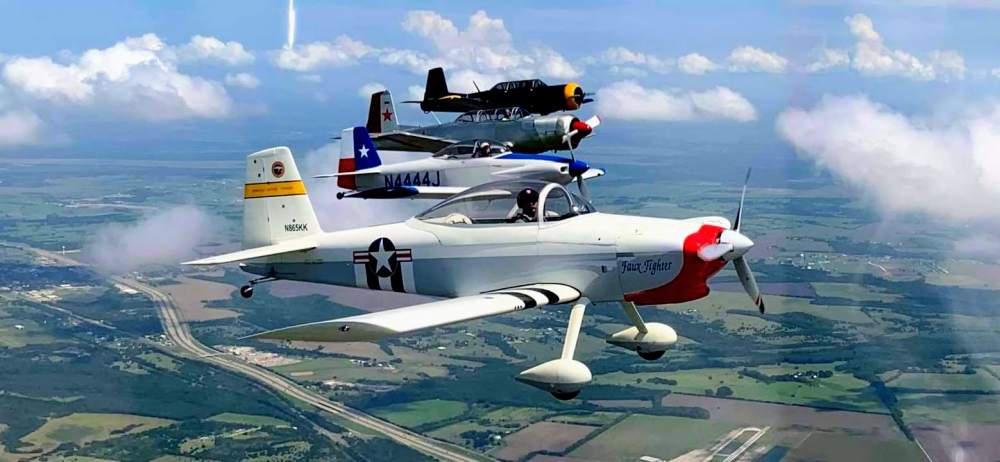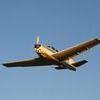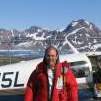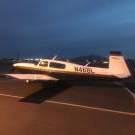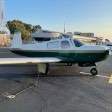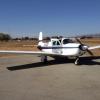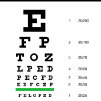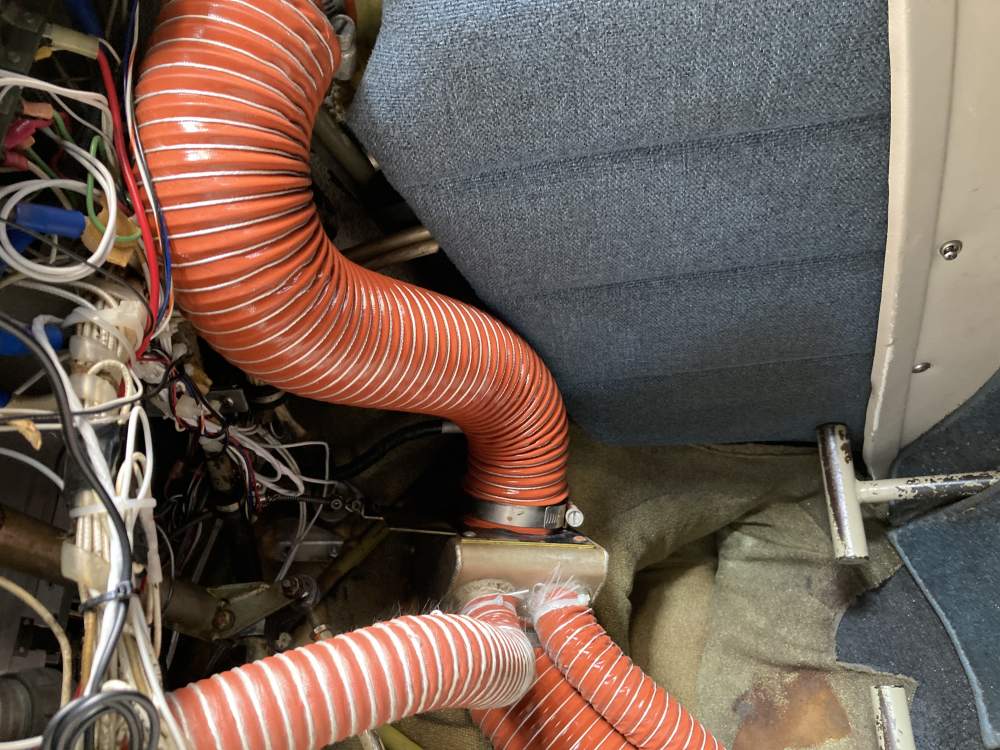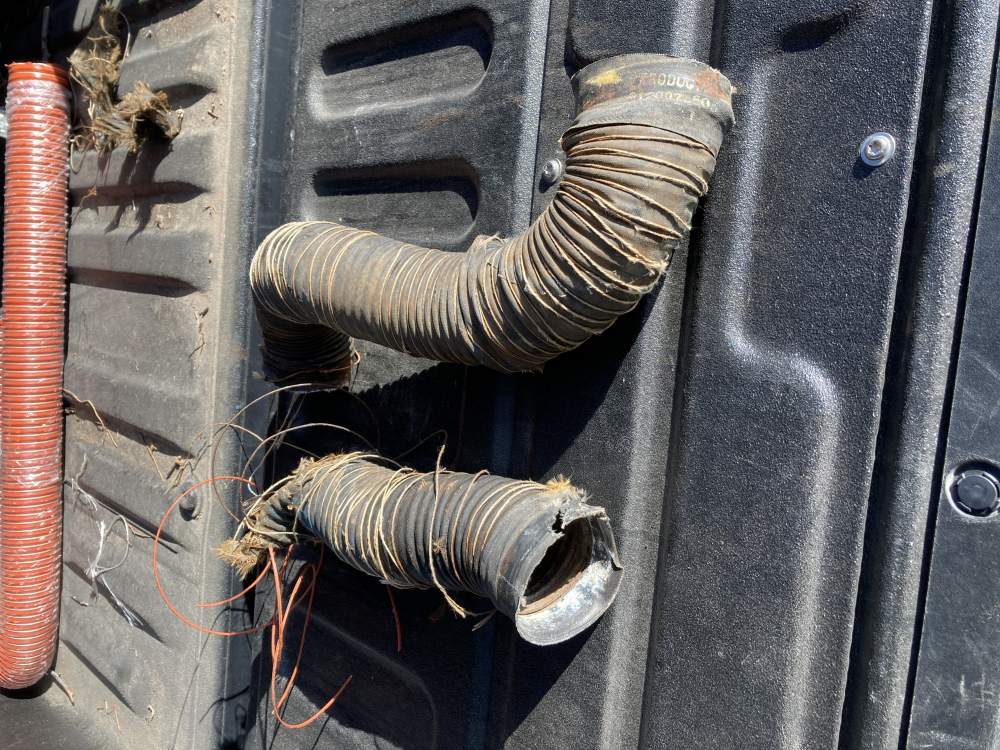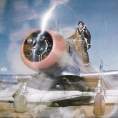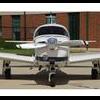Leaderboard
Popular Content
Showing content with the highest reputation on 10/23/2020 in all areas
-
So while my Mooney is in the shop, I'm doing something I've always wanted to do... get a tailwheel endorsement. I've always said, the sexy airplanes are all retracts or tailwheels. And I've always been just a little bit embarrassed that I can't fly a taildragger. So I'm addressing that issue and putting it behind me. This is just pattern work so not all that interesting. But I'm having a great time learning to fly all over again. (Actually the flying is the easy part, being on the ground is the issue.)11 points
-
Like almost everything else, I think it's a gray area. It depends... How low? 100'? 50'? 5'? At some point it becomes a safety issue bordering on reckless. Where that point is I don't know. Why? To clear game off the runway? Good plan. To impress friends and relatives? Not so much, but done in a reasonable manner, probably not a big deal. Unless you pull up too hard at the end of the runway and either over-stress the plane or get an accelerated stall. Or you turn while at a too low altitude and scrape a wingtip. In the Air Force we used to say something along the line of, "If you wouldn't do it with the Wing Commander watching, then don't do it." We could substitute FSDO instead.6 points
-
6 points
-
5 points
-
I can't speak for Richard but I think this article was about when and how to speak up to other pilots. Not about the dangers of low passes. Low passes in them self's are not more dangerous than any other takeoff and landing. I'm guessing Richard did a poor job articulating what he and his friend saw, if we were there we may have felt the same. The problem is when a low passe is done to impress, usually with a steep pull up at the end. There are plenty of NTSB reports featuring this maneuver, often with very experienced pilots. I have spoke at several events that Richard has spoke at, as well as been on his podcast. I know plenty of pompous ass's and Richard isn't one of them. I found him to be a very nice and humble guy that truly cares about promoting GA safety. This! cheers, Dan5 points
-
Back when I was a tower controller, there were several occasions when I asked pilots if they would like a low pass. It was usually military aircraft, but I also asked the occasional civilian pilot flying an aircraft type that I thought interesting/rare. The down side of being a radar controller is that all airplanes look the same on the scope.4 points
-
Too late to make a difference in terms of closing KSMO, which is closing in 2028, unfortunately. And it's not closing because pilots were making low passes over it. It's closing because people bought houses near an airport and then complained that there were low-flying airplanes overhead. The airport opened in 1923. I do the noise abatement departure over the golf course when I depart VFR, which is 95% of the time. I don't turn until reaching the shoreline. But I get angry every time I think of the impending closure of the airport. Rant over.4 points
-
Cue everyone suggesting the model they own. I’ll start by saying you should get a Bravo. In all seriousness, it may be the most under appreciated model and it’s not overly complex besides watching your temps since it’s got a pretty decent density controller. For instance, on takeoff there’s no “setting power” like the 231. It’s throttle full forward, Boost pump automatically turns on, and the density controller does the rest.3 points
-
Maybe if he would smile I could check to see if he has all his teeth to be sure3 points
-
We were flying the museum DC-3 northbound headed back to KPAE and needed to transition through KRNT’s airspace. I called the tower to request the transition and they replied, “Can we talk you into a low pass?” Never had a tower ask for that before. We happily complied and all had a good time. Skip3 points
-
3 points
-
3 points
-
I think a big player is also where you do it. I was once doing pattern work at John Wayne, and a guy in an A36 asked for a low pass. As i'm taxiing back to the runway, I see him pass by at give or take 150 to 165 knots, and laughed. nothing wrong with that. Even the tower approved. However if somebody did it at for example at Oceano, or Pacific city airport, 2 very small beach airports in the middle of a small town, those guys are assholes. You do it at an airport like Agua Caliente, or Amboy, 2 airports located in the middle of no where with no community around and no one to bother, who cares. Low passes are fun, and as long as you don't bother the community around and don't put them in danger, then by all means you should do it. but also understand that there is an added risk of doing low passes. It's kinda of like IFR flying. it allows you to do more, but theres an added risk to Flying IFR. you just have to find the risk you're willing to give up for the reward. If you're the type of pilot that does low high speed passes at airports that are trying to be shut down due to noise abatement , such as Santa Monica, or Oceano, please honestly F**k off. Airports aren't being opened any more. They're just being closed.3 points
-
3 points
-
Gents, I recently departed with my beloved M20F and will miss her dearly. This was my first airplane, and she will always have a special place in my heart. Its strange how attached you can become to an inanimate object, but I always felt like she served me so well. It was not uncommon for my wife and I to take 6hr long trips from central Texas to the east coast to visit family and friends. We rode in style, comfort, while going fast and sipping fuel. These airplanes are truly remarkable and I am sure one day I will come back to them. For now I have gone the Vans RV route and am doing a lot of formation flying and aerobatics. There are several people on this site who have really impacted my airplane ownership in a positive way by helping me with maintenance, offering advise, letting me borrow tools, sharing lessons learned, and all around being good dudes. I cant thank you enough. One of my most intimate and favored Mooney memories will forever be the caravan to Oshkosh and getting to camp with fellow Mooney drivers. You guys truly are a league of your own and I am thankful I was able to be a part of that. I have encouraged the new owner to join this site as it can be a wealth of knowledge, especially for a first time Mooney owner. Please continue to show the new guys the patience as they start asking the same noob questions I did when I first started, because god knows that stinking search function aint worth a lick Thanks again. Will miss you guys.2 points
-
I'll +1 that full throttle and a comfortable rpm is a fine way to operate a fuel-injected, naturally-aspirated Mooney. I climb at either full-forward (usually about 2680) or 2600 rpm and typically cruise at 2500 rpm. Throttle goes to full at takeoff and generally stays there until descent to landing (this technique is blessed by Mike Busch, fwiw). CHTs can usually be managed with the cowl flaps. Sometimes in the summer I need to leave them 1/2 open at cruise once in a while, but usually once I'm at cruise they can be closed and the CHTs will be about where they should be. During climb they should be full open or 1/2 open if CHTs get on the cold side. Mixture settings will naturally also affect CHTs. If you can't manage your CHTs with the cowl flaps, the first thing to do is make sure your engine baffling and baffle gaskets are in good condition and are where they should be, and other things affecting air flow (e.g., cowl flap rigging) are where they should be as well.2 points
-
In my J I use WOT until at cruise altitude and just wind the prop back to 2600 after I'm 1000' AGL. I rarely have trouble with CHTs being too high except occasionally in the summer months when it is 95+ degrees and then I still leave the engine setup the same but just lower the nose a little bit to increase airflow.2 points
-
AOPA weekly videos start with a light speed headset ad... I think I know the handsome aviator... But, do you know who he is? go about a minute in to see the Mooney in the ad... Best regards, -a-2 points
-
You haven't been given an honorary doctorate (in medicine or other field) for your work reducing pilot exposure to Carbon Monoxide? We need to rectify this!!2 points
-
2 points
-
So, yesterday I stopped at KSVC (Silver City, NM) for fuel. I was about 7 miles out on a left base. I'm about to call in when A C-17 calls in and says they are going to do a low pass on 8. I call them and say I'm 7 SE on the base for 26 (the active runway). They come back and say they will offset south. I call them back and say I'm south you should offset north. They don't respond. I don't see them until I'm on final, and they are cooking along at an illegally fast speed. I call them and ask what their intentions are. They don't respond. They are coming straight at me, same altitude at a very fast speed. I'm about to break off to the left, when they break off to the left. they were about 1/2 mile from me at that point. I respect the military, but this was not safe. Wish I wasn't so busy with the plane so I could have grabbed my phone and shot a video.2 points
-
It should be nearly impossible if Garmin knows anything about digital security protocols....oh wait...they just got hacked a month ago....nevermind.2 points
-
The E flew for the first test flight yesterday. Install es complete and testing has begun.2 points
-
"Low pass" or "low approach" is kind of a trap phrase--it means nothing by itself. It's a version of the "if by whiskey" fallacy, a common tool of internet trolls. I just did a "low pass" today at an airport in the middle of a urban area. I had no intention of landing, my intention was to fly at below the legal minimum altitude along the runway and make a climb at the end at full power, where there is a large residential area that was going to hear the full force of my Hartzell prop. What actually happened today is that it was my first post-annual flight, so I remained in the pattern at the towered airport and asked for a low pass and a visual landing gear check from the tower. I descended but stayed above 300' AGL because I wanted them looking up at the gear, and because of said urban sprawl around the airport. As such, I was farther away from the ground than a normal landing and takeoff. Obviously, what I did today was not going to cause the problems people are discussing. Yet, as @carusoam pointed out, there are plenty of smoking holes from other "low passes", as well as the other problems they can cause. Clearly there is a difference, but it is not part of the phrase "low pass"--rather, it's in its nuances. As to the other topic of whether to confront behavior that is unsafe, I think it's far more appropriate to confront a fellow pilot directly than to jump straight to calling the FSDO, yet I imagine the latter happens far more often than the former. I think pilots, like many professions, fail in having a culture of calling each other out and giving each other appropriate feedback when necessary. While it's human to avoid the discomfort of confronting someone who is similarly qualified, it's a necessary part of any safety culture, and I think we generally suck at it (even if many other professions suck more).2 points
-
"If you're the type of pilot that does low high speed passes at airports that are trying to be shut down due to noise abatement , such as Santa Monica, or Oceano, please honestly F**k off. Airports aren't being opened any more. They're just being closed." For clarification, there is no threat to close Oceano airport for noise abatement, or otherwise. During my time of being closely involved with the airport [Friends of Oceano Airport], I did survey many residents, as well as commercial businesses within the vicinity of Oceano Airport. By far, the large majority were delighted to have the airport. With that said, there were the usual minuscule amount of squawkers that selfishly don't want anything around them that they don't like. In fact, there was truly never any danger of Oceano Airport closure by anyone, including the county which owns the airport. If any danger ever existed, it was from an out of the area developer that wanted to persuade the Oceano community that the airport should be removed and a housing/condominium project be developed in its place, using his plan and proposal of such [$$$$]. The developer initially proposed 6 individual public community meetings for his attempted persuasion. Two of the meetings were held, attended by zero community members and attended only by a huge pilot contingency we gathered. The remaining 4 meetings never happened, as the developer felt we were too intimidating..........you were quite correct about that Mr. Jeff Edwards [developer]!! Correct that continued vigilance, involvement and support of your local airport, small or large is imperative! Correct that respectful behavior is required when flying to/from our airports, large or small. Be a good neighbor, always. Be respectful of others as you wish them to be of you...........pretty simple.2 points
-
Phraseology helps when speaking with controllers. They’d be familiar with a “low approach.” Don’t shine your ass. I would keep it above a wingspan in height. At the departure end no need to pull the wings off either. Just a nice easy release of forward pressure with a gentle turn less than 30° bank. I think it looks way better and much more classy when one sees it flown with greater precision. Versus the goofball that is the next smoking hole. So many think harder is better, harder just makes you look foolish. -Matt2 points
-
I have been using the Tempest UREM37BY plugs with great success. No more fouling.2 points
-
2 points
-
2 points
-
I thought that column by McSpadden was WAY over the top. Frankly, I've always thought the guy a pompous ass; this just confirmed it. I failed to see ANYTHING wrong with what the pilot did. Honestly, I think the ONLY reason McSpadden didn't confront the pilot was that he KNEW the pilot didn't break any regs! He was just upset he couldn't come up with something. So, he wasted a bunch of ink spouting off in public to make himself feel superior. Don't ask how I really feel2 points
-
I've been known to make a low pass or two. As long as I'm not causing any issues in the pattern, quiet little airport, no tower... Why not?2 points
-
So I have joined the overpriced dual keyway gear club. I went to install the Surefly and the closest I could get it timed was around 2-3 degrees off. I purchased a new gear and will be finishing the install with my A&P/IA on Saturday. The best deal on the gear I could find is the SL68C19622 Superior part from AirPower.2 points
-
Buyer: "There’s a tear in the seat, I’d like you to take $500 off the price.” Me: ”No.”2 points
-
I would go with Tempest in a heartbeat. Here is the reason...The next time you clean your Champion plugs, do as the Champion Service manual requires and measure the resistance of the center conductor. You will be surprised how many of your plugs will be high resistance but still seem to work fine. I have found that some plugs will measure more than 100k ohms when a new Tempest is very steady at 1 k ohm, even after 500 hours. I think Champion has been sitting on their laurals for far too long without competition. I will never buy another Champion plug until they reengineer it. For what its worth..2 points
-
A complex endorsement is required to act as PIC of a complex airplane such as all Mooney M20's with the exception of the D model (if a fixed gear one still exists). Additionally a high performance endorsement is required to act as PIC of all post J Mooneys as they have over 200HP. So is there any way for a not yet HP/Complex endorsed Private Pilot to log PIC time in a Mooney? Yes! As long as they fly with another pilot or instructor who is qualified to act as PIC in a Mooney (including BFR, current, medical, and Complex/HP endorsements). More about that and the story of how I got kicked out of a flight school for knowing more than the instructor here:1 point
-
Doctor? that would be nice, if that were the case I would be getting in a Ovation. Unfortunately my K was engine-less when we shot this, the fancy plane is @ThorFlight's J. I hope Lightspeed's production will keep up with the sudden increase in demand! Cheers, Dan1 point
-
Is it an M20K? Is there a CO monitor at every seat location? is the plane in the Midwest? -a-1 point
-
What a waste of an airplane. If they're doing to destroy a Mooney, they might as well show the aftermath, and less of the "talent's" face. At least I had the volume off.1 point
-
Thank you for the insight about the USAF training. I plan to find the best instructor possible. There are two Mooney experienced CFI in Houston, TX according to the Mooneyflyer's website. I contacted both of them well before I started PPL training. One of them told me he is very busy and can only do the transition training, the other CFI told me we could work together (possibly) but scheduling might be a problem to fly as much as I wanted to fly with him. I plan to contact both of them again when I get the airplane and PPL.1 point
-
I would agree that fine wires are optimum for performance and longevity (cheaper in the long run), but the comptroller gets a say, too. I’ve got a BY on the shelf going in my lower #4 next time I’ve got the cowling off. All those pesky screws. Happy to hear Pilot Coyote has provided an endorsement.1 point
-
Since you have a flight director, you have a direct indication of what the autopilot is doing by watching the command bars and the annunciator lights on the KC 192. The FD command bars are simply a visual indication of what the autopilot is telling the servos to do. So, rule 1 is never engage the AP if the command bars are not “satisfied.” But, that doesn’t seem like what happened in your case. The normal sequence is approach armed (APR blinking), localizer captured and GS armed (APR steady illuminated), plane flies constant pitch (or altitude if in ALT hold) until glideslope centers, then, glideslope captures (GS iluminated, ALT cancels if it was engaged). To get a pitch up (assuming no autopilot fault) would require the autopilot to enter GS capture (as opposed to GS armed) with the command bars showing a pitch up command. When troubleshooting this sort of thing, I pick a good VFR day and just work with the tower asking to track the localizer inbound on repeated circuits which is much more efficient than working approach control for approaches. BTW, as far as the KFC 150 knows, an ILS and a LPV are the same thing. Skip1 point
-
Im located in Montana and a low pass on most of our little fields is for safety. Many of the fields do not have a game fence so in the winter when the runways are the only open area deer, antelope, and bird congregate on them. Upon arrival I announce a low pass to check for game and sock conditions then after ascend and enter into the pattern.1 point
-
Calling @201er. Did someone (else?) repaint your Mooney?? Or did you beat Steve to a screen name?1 point
-
But you can appreciate how that could go. If the seller says there is small tear in the seat that's $500, a crank in interior plastic, $500, etc. Its a 50 year old plane, its not off the assembly line. Seems disingenuous. Now maybe if a non-airworthiness item is very big like a tank seal required soon but still airworthy I could see that. -Robert1 point
-
Ok, I'll take the other side of the argument here. I think your plan is a good one. Get your Private and then get the Mooney you want and can afford. The speed and power will be shocking at first and you'll struggle to stay in front of the airplane. But it's nothing 10 or 20 hours with a CFI or other experienced Mooney Pilot can't solve. Fly it VFR for 6 months to a year and then get your IFR in that airplane. The one you're now comfortable flying. I used to live in Dallas and then lived in Austin for a few years. The Dallas, Austin, Houston triangle is perfect for a small single engine airplane. You'll be able to make the flights probably 70% of the time VFR and after adding IFR, your dispatch rate will be closer to 90%. You'll rarely have any icing and typical thunderstorms can be seen for a hundred miles and can usually be avoided by going around them. There is a huge Mooney community in Texas with lots of options to get experience and to find the right bird. Take a drive out to Smithville and meet JD and Laura Casteel who are one of the top Mooney Service Centers in the country and will have a hangar full of Mooneys for you to look at. Take a drive all the way to Kestrel on the north side of San Antonio and meet Jimmy Garrison who will also have a hangar full of Mooneys. But bring your checkbook as they are all for sale and Jimmy's a better than average seller. The learning curve from a trainer to an Ovation or other Mooney is a steep one. But it's not impossible. The plethora of airports scattered all over east Texas, flat terrain, and long runways, will ease the transition. Even the larger airports like DAL HOU and AUS are all GA friendly. I don't know of a better place to use a single engine airplane to commute.1 point
-
Welcome TC, I also recently installed a CO monitor in my aircraft. Not as fancy as your solution though, simply used some velcro to attach it to the lower part of the middle console. Will provide a photo as soon as a get back in the hangar. Good idea to make an 3D print adaptor for the mic-holder. I already y removed the mic. N913KS & N99YY Obviously our aircraft were neighbors until some month's ago: Yours at EDMA, mine at EDMQ (now based in EDKA) Marc Ulm made nice pics and videos of our aircraft some years ago (before we owned them), e.g. N913KS (mine) And this is yours N99YY: It's a small world we live in .. Regards, Matthias1 point
-
1 point
-
If it runs fine for 30 hours, then starts running rough until serviced again, I would suspect sediment in the fuel tanks. Filter the fuel to the engine through a fine white filter. You may have some deterioration some where. Engine monitors save a whole lot of shotgunning.1 point
-
1 point
-
To close the loop, it’s now 462-021. Seems they share that with Pipers. Tom1 point




